Here's the code [dead-link removed] that wasted my morning... It's not complete, but it basically works. You can either get the notebook from the previous link [dead] or copy the code below.
Note that a similar question turned up on ask.sagemath not so long ago.
Almost like Sasha's solution, you define a symbolic matrix using
A = SymbolicMatrix["A", {n, k}]
for some string "A" that does not have to be the same as the symbol A. Ok, here's the code:
ClearAll[SymbolicMatrix]
Options[SymbolicMatrix] = {Transpose -> False, Conjugate -> False, MatrixPower -> 1};
Short hand for entering square matrices (could make it work for different heads...)
SymbolicMatrix[name_String, n:_Symbol|_Integer, opts : OptionsPattern[]] := SymbolicMatrix[name, {n, n}, opts]
Behavior under Transpose, Conjugate, ConjugateTranspose and Inverse
SymbolicMatrix/:Transpose[SymbolicMatrix[name_String,{m_,n_},opts:OptionsPattern[]]]:=SymbolicMatrix[name,{n,m},
Transpose->!OptionValue[SymbolicMatrix,Transpose],Sequence@@FilterRules[{opts},Except[Transpose]]]
SymbolicMatrix/:Conjugate[SymbolicMatrix[name_String,{m_,n_},opts:OptionsPattern[]]]:=SymbolicMatrix[name,{m,n},
Conjugate->!OptionValue[SymbolicMatrix,Conjugate],Sequence@@FilterRules[{opts},Except[Conjugate]]]
SymbolicMatrix/:ConjugateTranspose[A:SymbolicMatrix[name_String,{m_,n_},opts:OptionsPattern[]]]:=Conjugate[Transpose[A]]
SymbolicMatrix/:Inverse[SymbolicMatrix[name_String,{n_,n_},opts:OptionsPattern[]]]:=SymbolicMatrix[name,{n,n},
MatrixPower->-OptionValue[SymbolicMatrix,MatrixPower],Sequence@@FilterRules[{opts},Except[MatrixPower]]]
SymbolicMatrix/:(Transpose|Conjugate|ConjugateTranspose|Inverse)[eye:SymbolicMatrix[IdentityMatrix,{n_,n_}]]:=eye
Combining matrix powers (including the identity matrix)
SymbolicMatrix/:SymbolicMatrix[a_String,{n_,n_},opt1:OptionsPattern[]].SymbolicMatrix[a_,{n_,n_},opt2:OptionsPattern[]]:=SymbolicMatrix[a,{n,n},Sequence@@FilterRules[{opt1},Except[MatrixPower]],MatrixPower->Total[OptionValue[SymbolicMatrix,#,MatrixPower]&/@{{opt1},{opt2}}]]/;FilterRules[{opt1},Except[MatrixPower]]==FilterRules[{opt2},Except[MatrixPower]]
SymbolicMatrix[a_String,{n_,n_},opts:OptionsPattern[]]:=SymbolicMatrix[IdentityMatrix,{n,n}]/;OptionValue[SymbolicMatrix,{opts},MatrixPower]===0
SymbolicMatrix/:(A:SymbolicMatrix[a_String,{n_,m_},OptionsPattern[]]).SymbolicMatrix[IdentityMatrix,{m_,m_}]:=A
SymbolicMatrix/:SymbolicMatrix[IdentityMatrix,{n_,n_}].(A:SymbolicMatrix[a_String,{n_,m_},OptionsPattern[]]):=A
Pretty printing with the dimension as a tooltip.
Format[SymbolicMatrix[name_String,{m_,n_},opts:OptionsPattern[]]]:=With[{
base=If[OptionValue[SymbolicMatrix,MatrixPower]===1,
StyleBox[name,FontWeight->Bold,FontColor->Darker@Brown],
SuperscriptBox[StyleBox[name,FontWeight->Bold,FontColor->Darker@Brown],OptionValue[SymbolicMatrix,MatrixPower]]],
c=Which[
OptionValue[SymbolicMatrix,Transpose]&&OptionValue[SymbolicMatrix,Conjugate],"\[ConjugateTranspose]",
OptionValue[SymbolicMatrix,Transpose],"\[Transpose]",
OptionValue[SymbolicMatrix,Conjugate],"\[Conjugate]",
True,Null]},
Interpretation[Tooltip[DisplayForm@RowBox[{base,c}/.Null->Sequence[]],{m,n}],SymbolicMatrix[name,{m,n},opts]]]
Format[SymbolicMatrix[IdentityMatrix,{n_,n_}]]:=Interpretation[Tooltip[Style[\[ScriptCapitalI],Bold,Darker@Brown],n],SymbolicMatrix[IdentityMatrix,{n,n}]]
Define some rules for Dot. Need to extend then so that it can handle scalar quantities etc...
Also so that inverses of A.B can be taken if A.B is square, even if neither A nor B are square.
SymbolicMatrix::dotdims = "The dimensions of `1` and `2` are not compatible";
Unprotect[Dot]; (*Clear[Dot];*)
Dot/:(a:SymbolicMatrix[_,{_,n_},___]).(b:SymbolicMatrix[_,{m_,_},___]):=(Message[SymbolicMatrix::dotdims,HoldForm[a],HoldForm[b]];Hold[a.b])/;Not[m===n]
Dot/:Conjugate[d:Dot[A_SymbolicMatrix,B__SymbolicMatrix]]:=Map[Conjugate,d]
Dot/:(t:Transpose|ConjugateTranspose)[d:Dot[A_SymbolicMatrix,B__SymbolicMatrix]]:=Dot@@Map[t,Reverse[List@@d]]
Dot/:Inverse[HoldPattern[d:Dot[SymbolicMatrix[_,{n_,n_},___]...]]]:=Reverse@Map[Inverse,d]
A_ .(B_+C__):=A.B+A.Plus[C]
(B_+C__).A_:=B.A+Plus[C].A
Protect[Dot];
Make Transpose, Conjugate and ConjugateTranspose distribute over Plus.
Unprotect[Transpose, Conjugate, ConjugateTranspose];
Clear[Transpose, Conjugate, ConjugateTranspose];
Do[With[{c = c}, c[p : Plus[a_, b__]] := c /@ p], {c, {Transpose, Conjugate, ConjugateTranspose}}]
Protect[Transpose, Conjugate, ConjugateTranspose];
Here's some simple tests/examples


Now for code that deals with the component expansion. Like Sasha's solution, I'll overload Part.
Clear[SymbolicMatrixComponent]
Options[SymbolicMatrixComponent]={Conjugate->False,MatrixPower->1};
Some notation
Format[SymbolicMatrixComponent[A_String,{i_,j_},opts:OptionsPattern[]]]:=Interpretation[DisplayForm[SubsuperscriptBox[StyleBox[A,Darker@Brown],RowBox[{i,",",j}],
RowBox[{If[OptionValue[SymbolicMatrixComponent,{opts},MatrixPower]===1,Null,OptionValue[SymbolicMatrixComponent,{opts},MatrixPower]],If[OptionValue[SymbolicMatrixComponent,{opts},Conjugate],"*",Null]}/.Null->Sequence[]]]],
SymbolicMatrixComponent[A,{i,j},opts]]
Code to extract parts of matrices and Dot products of matrices
Need to add checks to ensure that explicit summation ranges are all sensible.
SymbolicMatrix/:SymbolicMatrix[A_String,{m_,n_},opts:OptionsPattern[]][[i_,j_]]:=SymbolicMatrixComponent[A,If[OptionValue[SymbolicMatrix,{opts},Transpose],Reverse,Identity]@{i,j},Sequence@@FilterRules[{opts},Options[SymbolicMatrixComponent]]]
SymbolicMatrix/:SymbolicMatrix[IdentityMatrix,{m_,n_}][[i_,j_]]:=KroneckerDelta[i,j]
Unprotect[Part]; (*Clear[Part]*)
Part/:((c___.b:SymbolicMatrix[_,{o_,n_},OptionsPattern[]]).SymbolicMatrix[A_String,{n_,m_},opts:OptionsPattern[]])[[i_,j_]]:=With[{s=Unique["i",Temporary]},Sum[(c.b)[[i,s]]SymbolicMatrixComponent[A,If[OptionValue[SymbolicMatrix,{opts},Transpose],Reverse,Identity]@{s,j},Sequence @@ FilterRules[{opts}, Options[SymbolicMatrixComponent]]],{s,n}]]
Part/:(a_+b_)[[i_,j_]]:=a[[i,j]]+b[[i,j]]/;!And@@(FreeQ[#,SymbolicMatrix]&/@{a,b})
Part/:Hold[a_][[i_,j_]]:=Hold[a[[i,j]]]/;!FreeQ[a,SymbolicMatrix]
Protect[Part];
Some examples:





